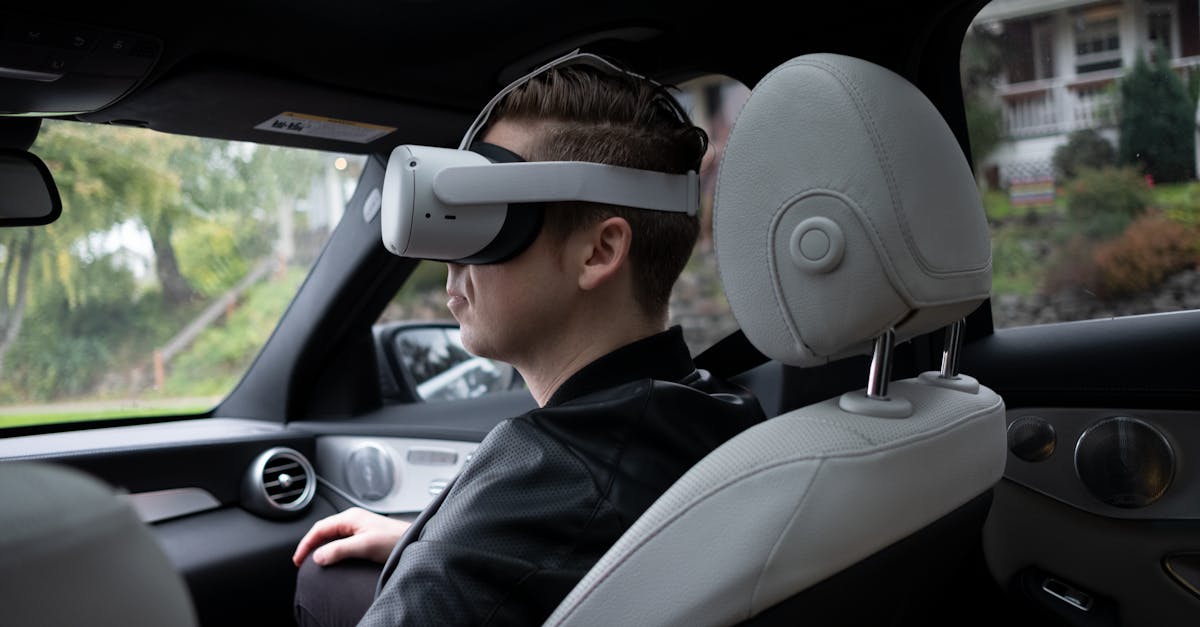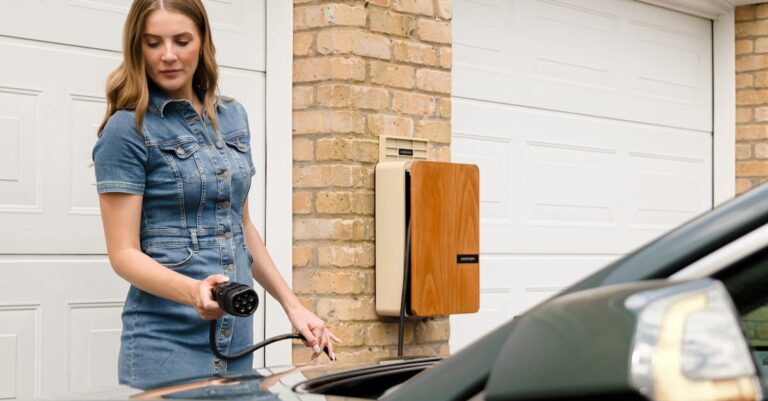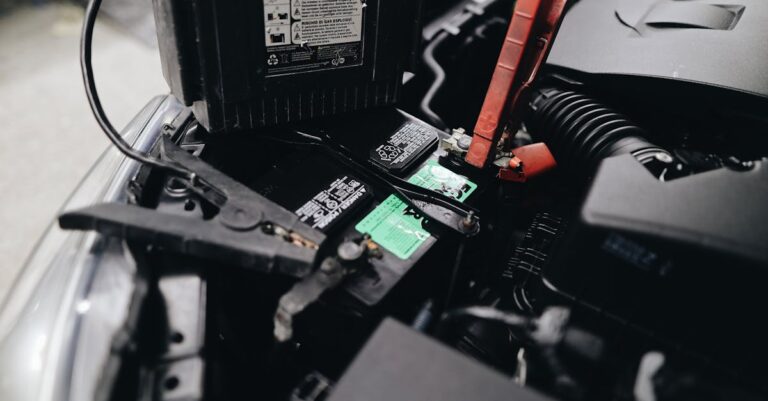Future Of Car Technology: Trends Shaping Tomorrow’s Drive
- Introduction: Buckle Up for a Wild Ride!
- The Electric Revolution: More Than Just Plugging In
- Autonomous Driving: Letting the Car Take the Wheel
- Connected Cars: The Internet on Wheels
- The Interior Experience Reimagined: Your Mobile Living Room
- Sustainability Beyond Electrification: Greener Wheels
- Conclusion: The Road Ahead is Paved with Innovation
- Frequently Asked Questions (FAQs)
Introduction: Buckle Up for a Wild Ride!
Remember when the pinnacle of car tech was a CD player or maybe power windows? Seems almost quaint now, doesn’t it? The automotive world is undergoing a transformation so profound, so rapid, it makes the shift from horse drawn carriages to the Model T look like a leisurely Sunday drive. We’re not just talking about faster or sleeker cars anymore. We’re talking about vehicles that drive themselves, communicate with each other and the world around them, run on electricity instead of gasoline, and offer an interior experience more akin to a futuristic lounge than a traditional cockpit. The future of car technology isn’t just knocking on the door; it’s kicked it down and is rearranging the furniture. So, grab your metaphorical keys (or maybe just your smartphone app) and let’s explore the electrifying, autonomous, connected, and sustainable trends shaping the very essence of how we move.
The Electric Revolution: More Than Just Plugging In
Let’s face it, electric vehicles (EVs) are no longer a niche curiosity. They’re rapidly becoming mainstream, fueled by environmental concerns, government incentives, and frankly, the sheer fun of instant torque. But the EV revolution is about much more than just swapping gas pumps for charging stations. It’s a fundamental shift in powertrain technology, and the innovation is accelerating faster than a performance EV off the line.
Battery Breakthroughs: Powering the Future
The heart of any EV is its battery. For years, lithium ion batteries have been the standard, but they come with limitations: range anxiety (the fear of running out of charge), charging times, cost, and even concerns about the environmental impact of mining materials like cobalt. The good news? Battery tech is evolving at lightning speed.
Solid State Batteries: The Game Changer?
Imagine a battery that holds significantly more energy in the same space (or less!), charges much faster, is safer (less prone to overheating), and lasts longer. That’s the promise of solid state batteries. Unlike current lithium ion batteries that use a liquid electrolyte, solid state batteries use, well, a solid one. This allows for higher energy density and improved safety. While they’re not quite ready for mass market prime time just yet due to manufacturing complexities and cost, many major automakers and battery companies are pouring billions into research and development. When solid state batteries become commercially viable, likely within the next decade, they could truly revolutionize the EV experience, potentially offering ranges well over 500 miles and recharge times comparable to filling a gas tank.
Faster Charging: Killing Range Anxiety
Even with current battery tech, charging speed is a major focus. Nobody wants to wait hours for their car to charge. Ultra fast charging technology is rapidly improving. We’re seeing charging stations capable of adding 100 or even 200 miles of range in just 15 to 30 minutes. This requires advancements not only in the charging stations themselves (higher power output) but also in battery management systems within the car that can handle this rapid influx of energy without degrading the battery’s lifespan. The goal? Make charging an EV almost as convenient as stopping for gas. Wireless charging, where you simply park over a pad, is also advancing, potentially adding another layer of convenience, especially for home charging.
Infrastructure Expansion: Charging Where You Need It
Awesome battery tech and fast charging are great, but they don’t mean much if you can’t find a charger when you need one. Building out a robust and reliable charging infrastructure is absolutely critical for mass EV adoption. This means more public charging stations – in cities, along highways, at workplaces, shopping centers, and apartment complexes. It’s not just about quantity, but also quality and accessibility. We need standardized payment systems, reliable station uptime, and strategic placement to serve both urban and rural drivers. Governments and private companies are investing heavily, but coordinating this rollout efficiently remains a significant undertaking. Think of it like the early days of the gas station network – it took time, but it was essential for the automobile to take over.
Autonomous Driving: Letting the Car Take the Wheel
Perhaps no future car technology captures the imagination (and generates debate) quite like autonomous driving. The idea of a car that can navigate traffic, park itself, and deliver you to your destination while you relax, work, or nap is incredibly appealing. But turning this science fiction dream into everyday reality is an enormously complex challenge.
Levels of Autonomy: Where Are We Now?
It’s important to understand that “self driving” isn’t an all or nothing concept. Engineers use a scale defined by the Society of Automotive Engineers (SAE) with levels 0 through 5:
- Level 0: No automation. The human driver does everything.
- Level 1: Driver Assistance. Features like adaptive cruise control or lane keeping assist, but not both simultaneously.
- Level 2: Partial Automation. Systems can control steering and acceleration/braking under certain conditions (like highway driving), but the driver must remain fully engaged and ready to take over instantly. Many new cars offer Level 2 systems (e.g., Tesla Autopilot, GM Super Cruise).
- Level 3: Conditional Automation. The car can handle most driving tasks under specific conditions, allowing the driver to take their attention away. However, the driver must be ready to intervene when requested by the system. This level is tricky from a legal and handover perspective and is only just starting to appear in limited forms.
- Level 4: High Automation. The car can handle all driving tasks within a specific operational design domain (ODD) – like a geofenced urban area or specific weather conditions – without needing human intervention within that domain. Think robotaxis operating in designated city zones.
- Level 5: Full Automation. The car can handle all driving tasks on any road and under any conditions a human driver could. No steering wheel or pedals required. This is the ultimate goal, but likely still many years away.
Currently, most advanced systems available to consumers are Level 2. True Level 4 and 5 autonomy is still largely in the testing and limited deployment phase (like those robotaxi services in certain cities).
Sensor Fusion: The Eyes and Ears of the Car
How does a self driving car “see” the world? Through an array of sophisticated sensors. No single sensor type is perfect, so autonomous vehicles rely on sensor fusion – combining data from multiple sources to create a comprehensive, redundant understanding of the environment. Key sensors include:
- Cameras: Provide rich visual information, great for identifying road markings, traffic lights, and pedestrians. However, they struggle in poor weather (rain, fog, snow) and low light.
- Radar: Uses radio waves to detect objects and measure their distance and speed. Works well in bad weather and darkness but provides less detailed information than cameras.
- LiDAR (Light Detection and Ranging): Uses laser pulses to create detailed 3D maps of the surroundings. Excellent for object detection and localization, even in darkness, but can be expensive and sometimes affected by heavy rain or snow.
- Ultrasonic Sensors: Primarily used for short range detection, like parking assistance.
Combining the strengths of each sensor type allows the car’s computer to build a robust, real time picture of its surroundings, even when one sensor type might be compromised.
AI and Machine Learning: The Brains Behind the Operation
Sensors gather the raw data, but it’s Artificial Intelligence (AI) and Machine Learning (ML) that make sense of it all. Complex algorithms analyze the fused sensor data to identify objects (other cars, pedestrians, cyclists, animals), predict their behavior, interpret road signs and traffic signals, and make crucial driving decisions – accelerating, braking, steering, changing lanes. This requires immense computing power within the vehicle and relies heavily on deep learning models trained on vast amounts of driving data. The AI needs to handle not just routine driving but also unexpected “edge cases” – situations it hasn’t encountered before. This continuous learning and improvement process is vital for making autonomous systems safer and more capable.
Challenges and Hurdles: Safety, Ethics, and Regulation
Despite the incredible progress, significant hurdles remain before fully autonomous cars become commonplace. Safety is paramount – these systems need to be demonstrably safer than human drivers, capable of handling chaotic urban environments and unpredictable human behavior. Then there are the ethical dilemmas: in an unavoidable accident scenario, how does the car decide who to prioritize? Regulations and legal frameworks are still catching up, needing to address issues like liability in case of an accident, cybersecurity threats, and standardized testing protocols. Public acceptance and trust also need to be built. Overcoming these challenges will require collaboration between automakers, tech companies, governments, and the public.
Connected Cars: The Internet on Wheels
Your car is increasingly becoming another connected device, just like your smartphone or smart speaker. Built in cellular modems and Wi Fi capabilities are transforming vehicles into mobile communication hubs, enabling a whole range of new features and services.
V2X Communication: Cars Talking to Everything
This is where things get really interesting. V2X stands for “Vehicle to Everything.” It allows cars to communicate wirelessly with:
- V2V (Vehicle to Vehicle): Cars can share information about their speed, position, and braking status, potentially preventing collisions by warning drivers (or autonomous systems) of hazards ahead, like a car suddenly braking around a blind corner.
- V2I (Vehicle to Infrastructure): Cars can communicate with traffic lights (to optimize flow and reduce waiting times), road signs (relaying speed limits or warnings directly to the dashboard), and even road sensors (warning about icy patches or potholes).
- V2P (Vehicle to Pedestrian): Cars can detect pedestrians or cyclists carrying compatible devices (like smartphones), adding another layer of safety, especially in complex urban environments.
- V2N (Vehicle to Network): This covers communication with the cloud for things like real time traffic updates, map downloads, software updates, and remote diagnostics.
V2X technology has the potential to dramatically improve road safety, reduce traffic congestion, and enhance the overall driving experience by creating a cooperative ecosystem on our roads.
Over the Air (OTA) Updates: Your Car Gets Better Over Time
Remember having to take your car to the dealership for software updates? Those days are numbered. OTA updates allow manufacturers to remotely send software improvements and new features directly to your car via its cellular connection, much like updating your smartphone’s operating system. This means your car’s infotainment system, driving assistance features, battery management, and even performance characteristics can be enhanced long after you’ve driven it off the lot. It keeps the car feeling fresh, fixes bugs quickly, and can even add significant new capabilities without requiring a physical service visit. Tesla pioneered this approach, and now most major automakers are adopting it.
In Car Infotainment and Personalization: Your Digital Cockpit
Connectivity fuels a revolution in the dashboard experience. Larger, higher resolution touchscreens are becoming the norm, integrating navigation, media streaming (music, podcasts, video), communication, and vehicle settings. Cloud connectivity enables highly personalized experiences – the car can remember your seat position, climate preferences, favorite radio stations, and navigation destinations, potentially even adjusting settings automatically based on who is driving. Voice assistants are becoming more sophisticated, allowing drivers to control various functions without taking their hands off the wheel or eyes off the road. Expect integration with smart home devices, in car payments for fuel or parking, and even productivity tools, turning commute time into potentially more useful time.
The Interior Experience Reimagined: Your Mobile Living Room
As cars become more autonomous and connected, the focus is shifting from the act of driving to the experience inside the vehicle. If the car is doing the driving, what will passengers do? Automakers are envisioning interiors that are flexible, comfortable, and packed with technology, transforming the car cabin into a “third space” – a mobile extension of our homes and offices.
Smart Surfaces and Augmented Reality Displays
Physical buttons and knobs are disappearing, replaced by sleek touchscreens and “smart surfaces.” These are materials that look like wood or fabric trim but have integrated touch controls, lighting, or even displays that only appear when needed. Imagine adjusting the climate control by swiping across a seamless wood panel. Augmented Reality (AR) Head Up Displays (HUDs) are another exciting development. Instead of just showing basic speed and navigation info on the windshield, AR HUDs can overlay dynamic information directly onto the driver’s view of the road. Think navigation arrows that appear to float directly on the street ahead, highlighting the correct lane, or warnings that visually emphasize a pedestrian crossing the road. This makes information more intuitive and keeps the driver’s eyes focused on the road.
Health, Wellness, and Biometric Monitoring
Future car interiors might actively monitor and enhance your well being. Sensors integrated into the seats or steering wheel could track vital signs like heart rate and stress levels. The car could then proactively adjust cabin lighting, temperature, music, or even release calming scents to improve the driver’s mood or alertness. Some concepts even include features to monitor driver fatigue or impairment, potentially intervening if a safety risk is detected. As autonomy increases, the car could become a space for relaxation or even gentle exercise during a commute.
Sustainability Beyond Electrification: Greener Wheels
While electrification is a huge step towards greener transportation, sustainability in the automotive future goes further. Manufacturers are increasingly focused on the entire lifecycle of the vehicle.
This includes using sustainable and recycled materials in manufacturing – think vegan leather alternatives made from pineapple leaves or mushrooms, recycled plastics for interior components, and sustainably sourced wood trim. Reducing the environmental impact of battery production and developing efficient battery recycling processes are also crucial areas of focus. Lightweighting vehicles through advanced materials like carbon fiber composites and high strength aluminum helps improve energy efficiency, whether the car is electric or still uses an internal combustion engine (though those are clearly on the way out). The manufacturing process itself is also being scrutinized, with factories aiming for carbon neutrality through renewable energy sources and more efficient operations. The goal is a truly circular economy for automobiles, minimizing waste and environmental impact from cradle to grave.
Conclusion: The Road Ahead is Paved with Innovation
The future of car technology is undeniably exciting, perhaps even a little overwhelming. We’re moving towards vehicles that are cleaner, safer, smarter, and more integrated into our digital lives than ever before. Electrification is charging ahead, autonomy promises to redefine our relationship with driving, connectivity is turning cars into rolling tech hubs, and interiors are becoming personalized sanctuaries. Of course, challenges remain – infrastructure buildout, ensuring safety and security, navigating ethical questions, and managing the societal shifts these technologies will bring. But the direction is clear. The simple machine that revolutionized the 20th century is undergoing another, arguably even bigger, revolution for the 21st. The car of tomorrow won’t just be a way to get from A to B; it will be an intelligent, adaptable, and sustainable partner in our daily lives. So, keep your eyes on the road ahead – it’s going to be an incredible journey.
Frequently Asked Questions (FAQs)
FAQ 1: When will fully self driving cars (Level 5) be common?
A: That’s the million dollar question! While progress is rapid, achieving true Level 5 autonomy – cars that can drive anywhere, anytime, under any condition without human oversight – is incredibly complex. Most experts predict it’s still many years, perhaps even decades, away from widespread availability for personal ownership. We’ll likely see Level 4 autonomous vehicles (operating in specific areas or conditions, like robotaxis or delivery vehicles) become more common much sooner, potentially within the next 5 to 10 years in certain cities.
FAQ 2: Are electric cars *really* better for the environment?
A: Generally, yes, especially over their entire lifecycle. While battery production does have an environmental footprint (mining materials, energy intensive manufacturing), EVs produce zero tailpipe emissions during operation. This significantly improves air quality, particularly in urban areas. When charged with electricity generated from renewable sources (like solar or wind), the overall carbon footprint of an EV becomes substantially lower than a gasoline car. As battery technology improves and recycling becomes more widespread, the environmental benefits will continue to grow.
FAQ 3: What happens to my data in a connected car?
A: This is a crucial concern. Connected cars generate vast amounts of data – location, driving habits, system performance, infotainment preferences, and more. Automakers use this data for various purposes, including improving services, enabling OTA updates, remote diagnostics, and potentially offering personalized features or third party services. Data privacy and security are paramount. Manufacturers have privacy policies outlining how data is collected, used, and protected. As a consumer, it’s important to understand these policies and the controls you have over your data sharing preferences. Cybersecurity is also vital to prevent unauthorized access or malicious attacks.
FAQ 4: Will flying cars ever become a reality?
A: While often lumped into futuristic transport, “flying cars” (more accurately called eVTOLs – electric Vertical Take Off and Landing aircraft) are a separate, though related, field. Several companies are developing these small, electric aircraft for urban air mobility – essentially air taxis. While technically feasible, significant hurdles remain, including air traffic control for low altitude airspace, noise pollution, safety regulations, battery limitations for practical range, and public acceptance. So, while you might see air taxis in some cities within the next decade, personal flying cars replacing road cars are still firmly in the realm of science fiction for the foreseeable future.
FAQ 5: How will these technologies affect car ownership?
A: It’s likely we’ll see a shift. While many people will still own personal cars, the rise of autonomous technology could fuel the growth of mobility as a service (MaaS). Why own a car (with associated costs like insurance, maintenance, parking) if you can summon an autonomous vehicle on demand cheaply and efficiently? This could lead to fewer cars per household, potentially easing congestion and parking issues in cities. Car sharing and subscription models might also become more popular. However, personal car ownership isn’t likely to disappear entirely, especially in suburban and rural areas, or for those who simply enjoy driving.









